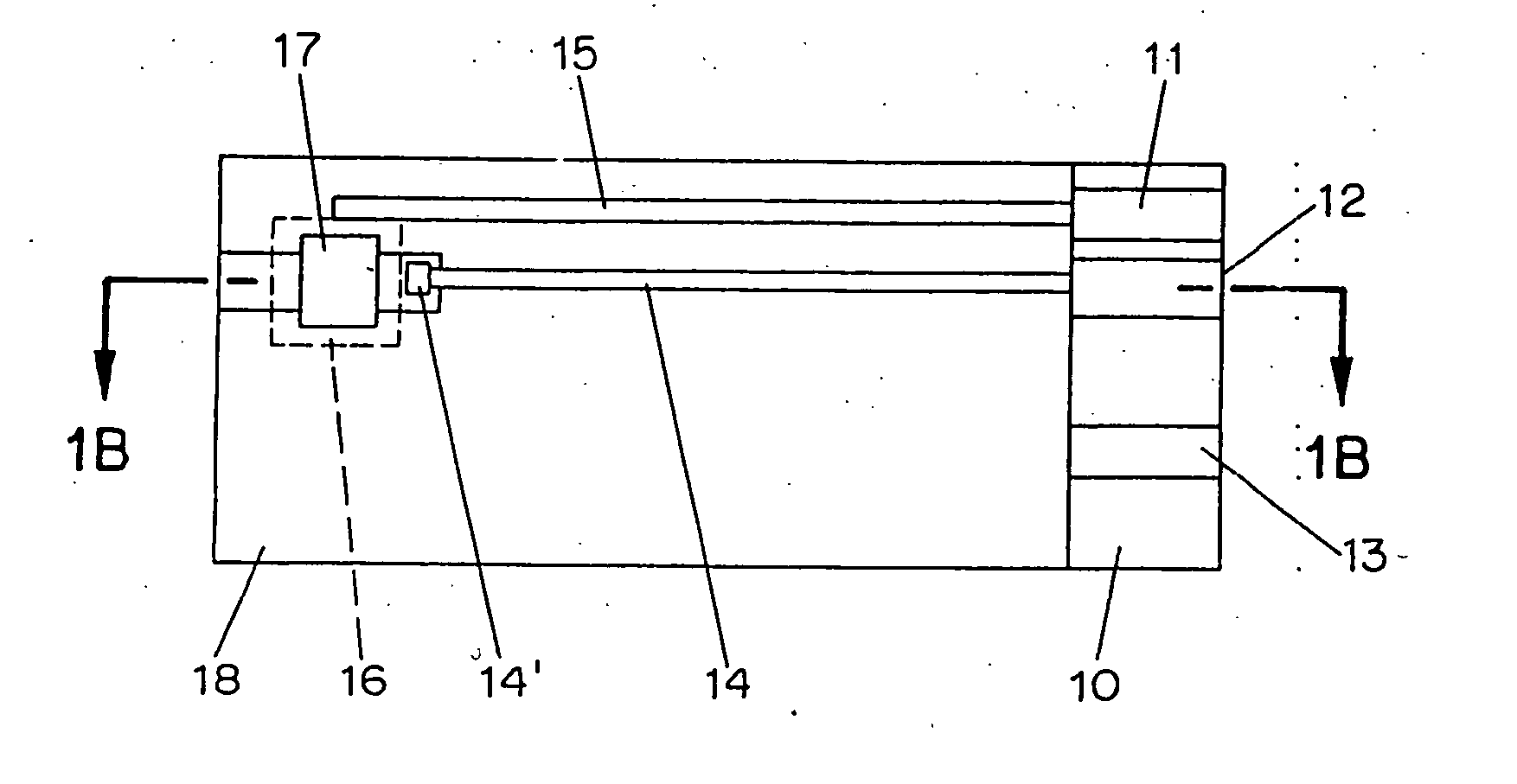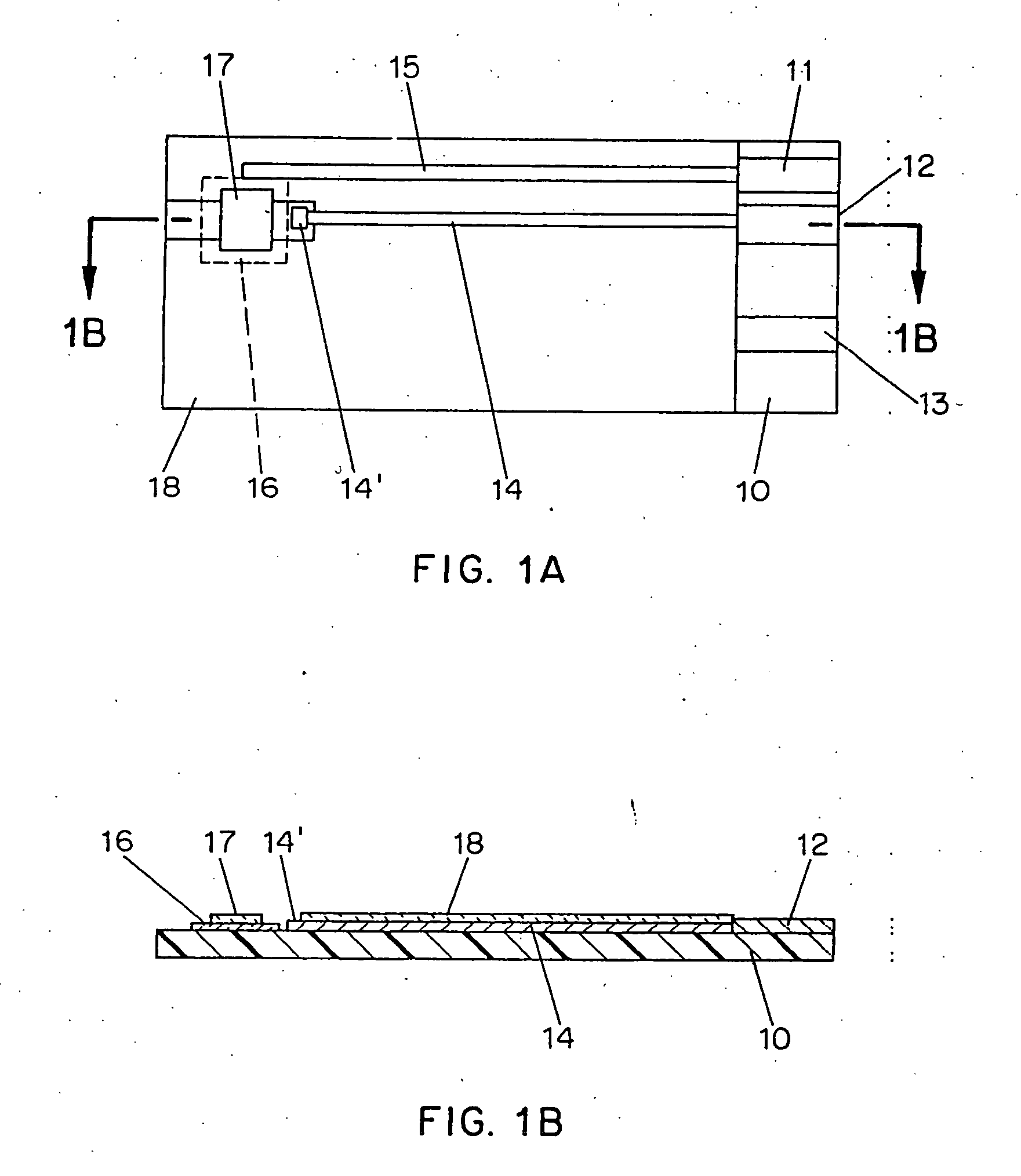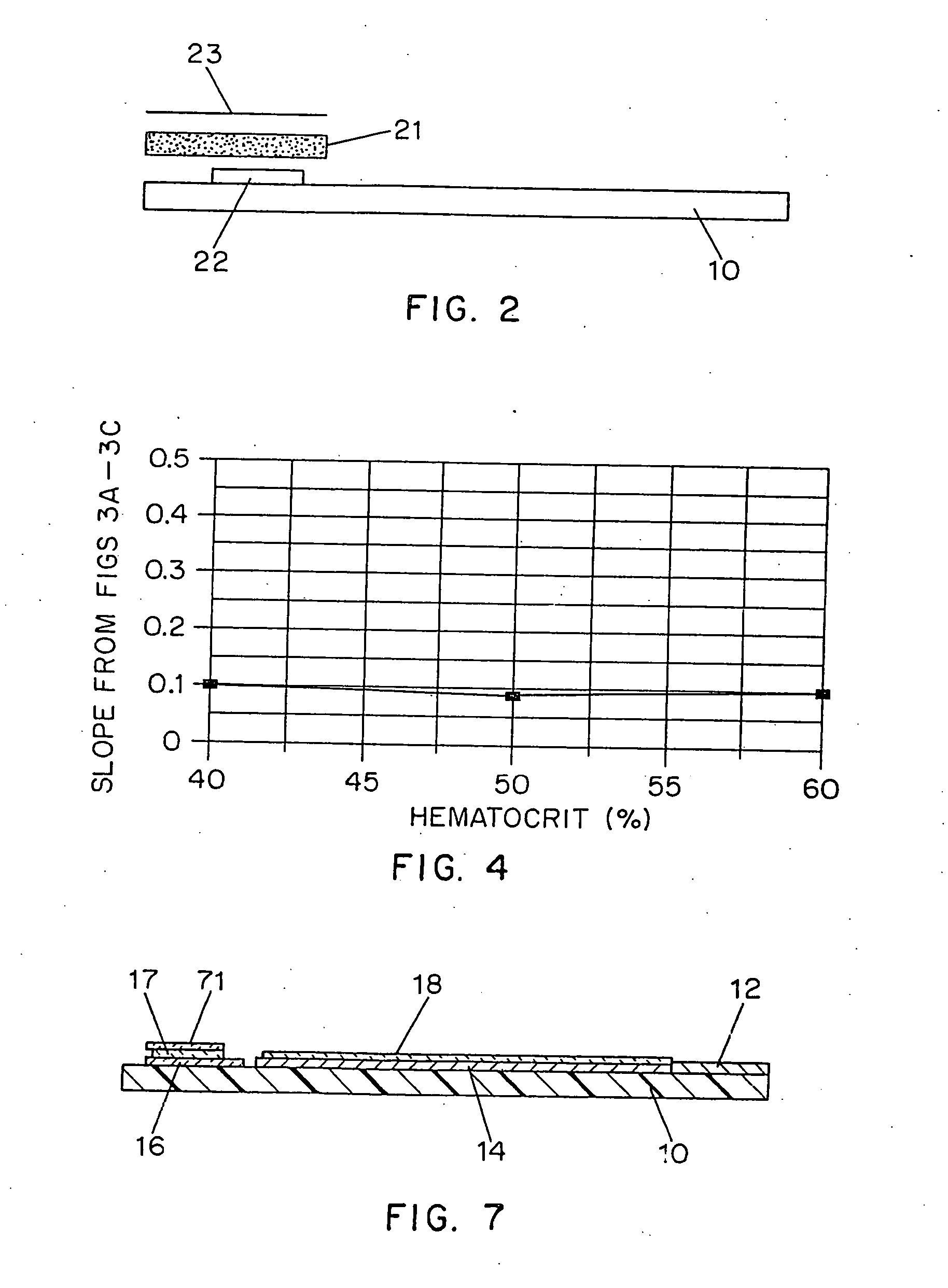Disposable test strips with integrated reagent/blood separation layer
a technology of blood separation layer and test strip, which is applied in the field of disposable test strips, can solve the problems of substantially insensitive testing strip to the hematocrit of the patien
- Summary
- Abstract
- Description
- Claims
- Application Information
AI Technical Summary
Benefits of technology
Problems solved by technology
Method used
Image
Examples
example 1
[0051] A non-conducting formulation for preparation of the integrated reagent / blood separation layer 17 was made as follows. 100 ml of 20 mM aqueous trisodium citrate was adjusted to pH 6 by the addition of 0.1 M citric acid. To this 6 g of hydroxyethyl cellulose (HEC) was added and mixed by homogenization. The mixture was allowed to stand overnight to allow air bubbles to disperse and then used as a stock solution for the formulation of the coating composition.
[0052] 2 grams Cab-o-Sil TS610 silica and 0.1 grams of Dow Corning antifoam compound was gradually added by hand to 50 grams of the HEC solution until about ⅘ of the total amount had been added. The remainder was added with mixing by homogenization. The mixture was then cooled for ten minutes in a refrigerator. 8 g of potassium hexacyanoferrate (III) was then added and mixed until completely dissolved. Finally, 0.8 g of glucose oxidase enzyme preparation (250 Untis / mg) was added and then thoroughly mixed into the solution. T...
example 2
[0053] To prepare glucose test strips using the ink formulation of Example 1, a series of patterns are used to screen print layers onto a 330 micron polyester substrate (Melinex 329). The first step is the printing of carbon pads. An array of 10×50 pads of carbon is formed on the surface of the polyester substrate by printing with EC2 carbon. (Ercon) The printed substrate is then passed through a heated dryer, and optionally cured at elevated temperature (e.g. 70° C.) for a period of 1 to 3 weeks.
[0054] Next, an array of silver / silver chloride connecting tracks and contacts is printed onto the substrate using ERCON R-414 (DPM-68) 1.25 bioelectrode sensor coating material and dried. One working track which makes contact with the carbon pad and one refernce track is printed for each carbon pad in the array.
[0055] A dielectric layer is then printed using ERCON R488-B(HV)-B2 Blue and dried. The dielectric layer is printed in a pattern which covers substantially all of each device, lea...
example 3
[0058] Test strips manufactured using the ink formulation of Example 1 in the manner described in Example 2 were placed in a test meter with an applied voltage of 500 mV and used to test blood samples having varying glucose concentrations and hematocrits ranging from 40% to 60%. FIGS. 3A-3C show the current measured 25 seconds after applying the voltage as a function of the glucose concentration, and FIG. 4 plots the slope of the glucose response as a function of hematocrit. As can be seen, the indicators produce highly reproducible current levels which are essentially independent of hematocrit.
PUM
| Property | Measurement | Unit |
|---|---|---|
| current | aaaaa | aaaaa |
| pH | aaaaa | aaaaa |
| temperature | aaaaa | aaaaa |
Abstract
Description
Claims
Application Information
 Login to View More
Login to View More - R&D
- Intellectual Property
- Life Sciences
- Materials
- Tech Scout
- Unparalleled Data Quality
- Higher Quality Content
- 60% Fewer Hallucinations
Browse by: Latest US Patents, China's latest patents, Technical Efficacy Thesaurus, Application Domain, Technology Topic, Popular Technical Reports.
© 2025 PatSnap. All rights reserved.Legal|Privacy policy|Modern Slavery Act Transparency Statement|Sitemap|About US| Contact US: help@patsnap.com



